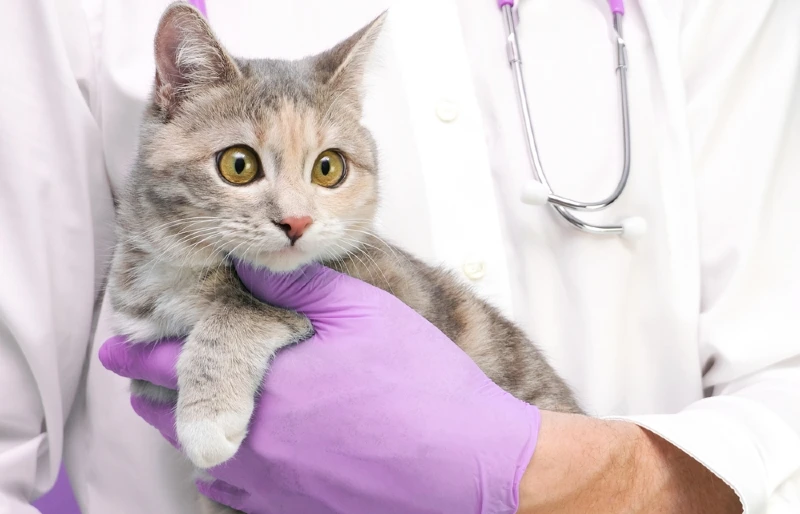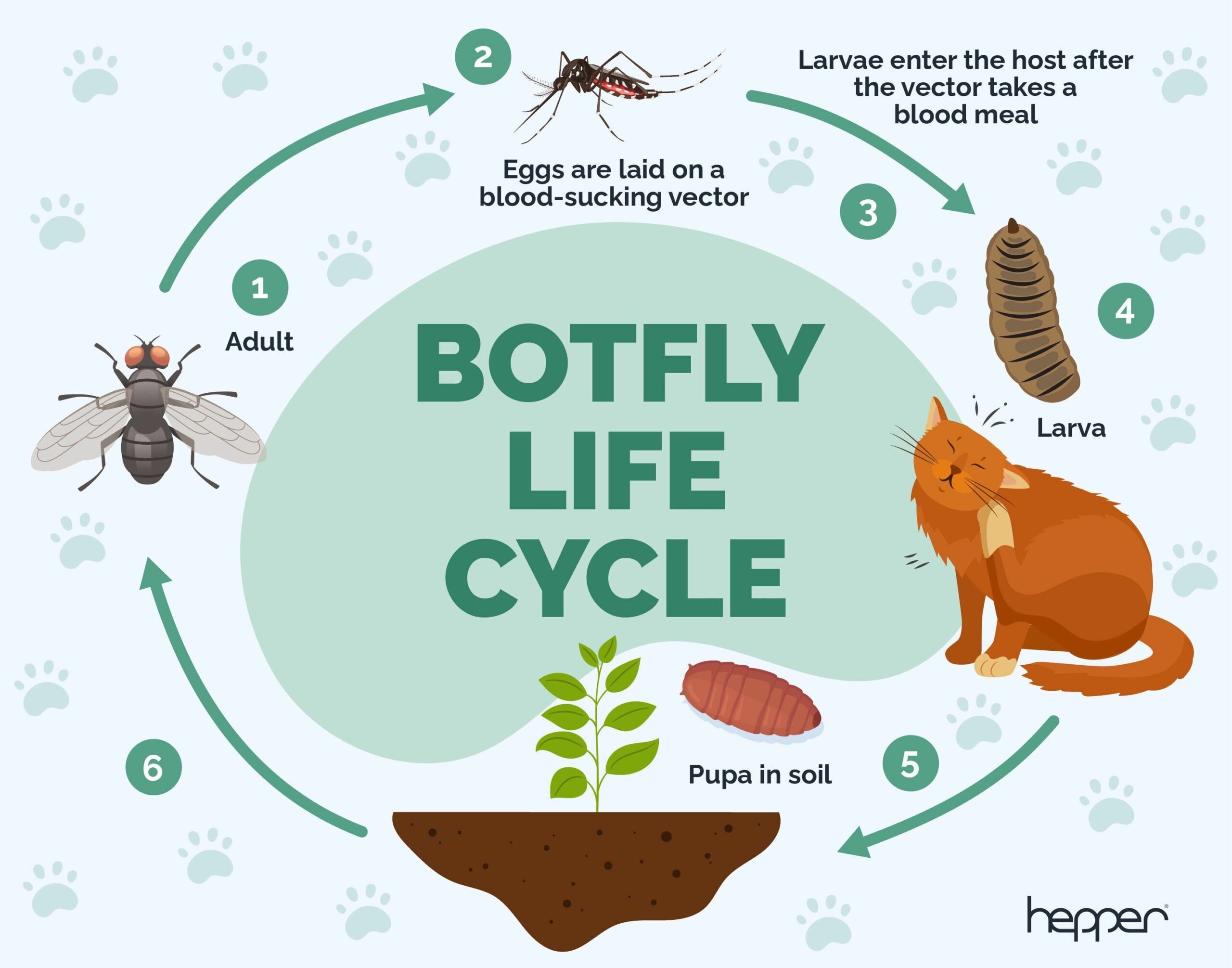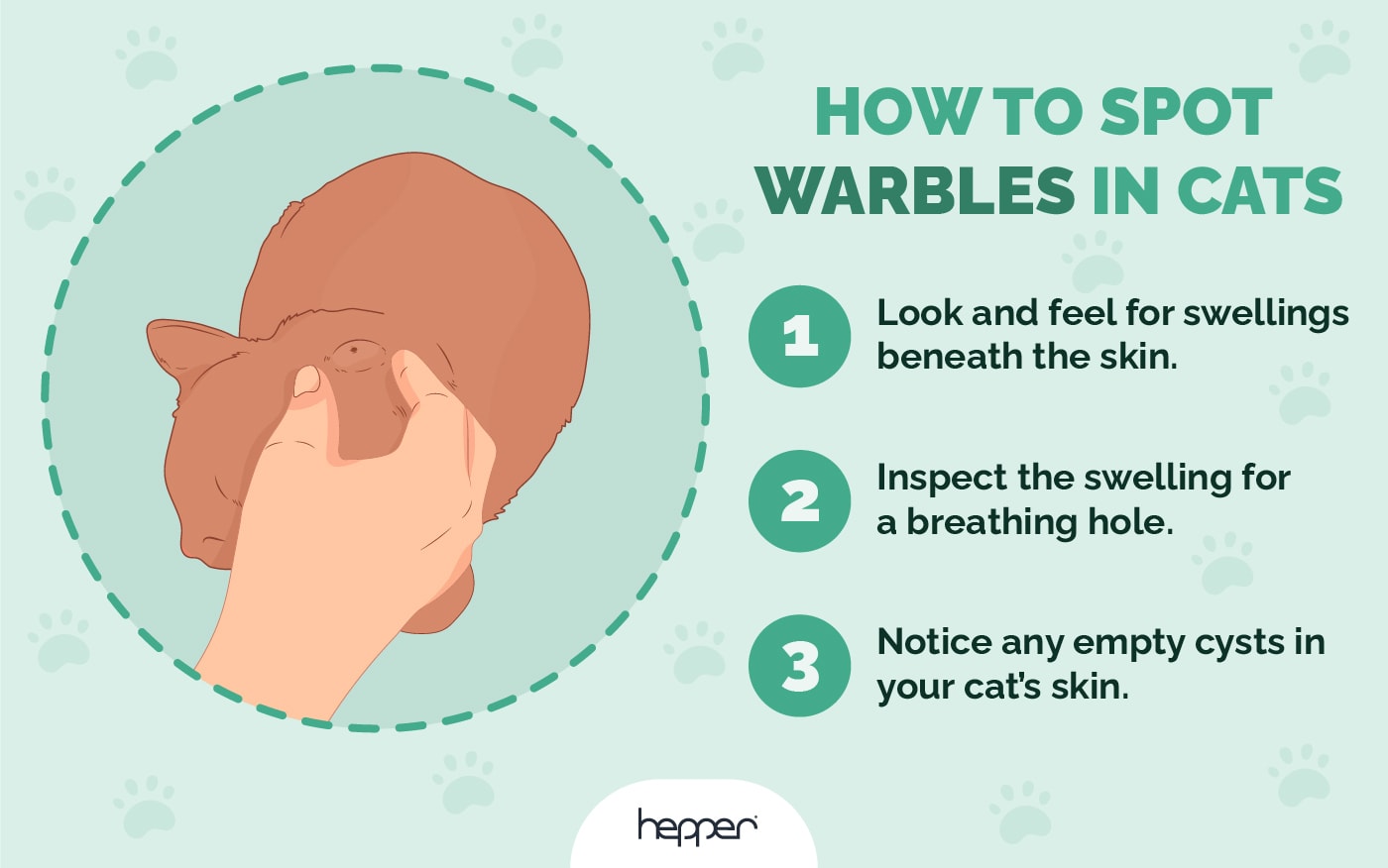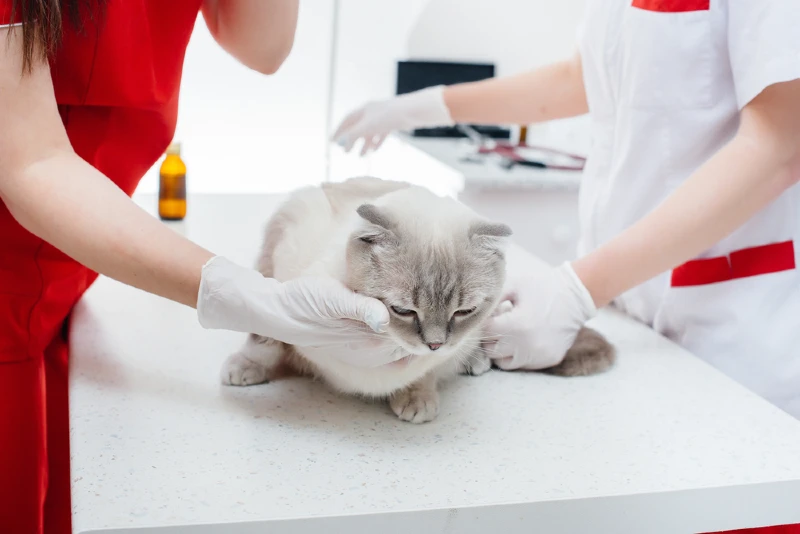Botflies in Cats: Vet-Reviewed Causes, Signs & Treatment
Updated on

One of the most disturbing parasite infections involves the botfly, so it’s the last thing that you want to find on your beloved cat. Botflies usually infect wild animals, but cats, dogs, and even humans can all be infected by the larva. These larvae latch onto the cat’s body, enter through an orifice and find a place under the cat’s skin, where they mature, to exit the body later.
Whether you’re just interested in learning more about botflies or you’re worried that your cat might have been infected by one, here are more details about this unfortunately common parasite.
What Are Botflies?

The botfly has various subfamilies that infest different animals. The botfly that infects pets is usually the rabbit or rodent botfly from the Cuterebridae family. Botfly can also be spelled bot fly and is officially known as Cuterebra. They are found across most of North America and most commonly infest rabbits and rodents in late spring and summer.
It starts with the botfly laying about five to 15 eggs in nests and blades of grass near burrows. The eggs hatch in response to the body heat of a nearby potential host. These maggots latch onto animals, where they enter through an orifice on the animal’s body, such as the nose, mouth, and occasionally, an open wound.
From there, they move through the body’s tissues until they reach the skin, where they set up their new home. This creates a lump under the skin, usually called a warble, and the larvae create a breathing pore on the surface of the skin.
Once the maggots mature, usually after about 30 days, they exit from the skin and drop to the ground. They pupate in the soil to emerge as adult botflies to start the cycle again.
What Are the Signs of Botflies?
It can be difficult to notice the early stages of a botfly larvae infestation, depending on where the larvae are located. The most obvious sign is a lump under your cat’s skin once the larvae have grown bigger. A small breathing hole can also be seen in the center of the lump, which gets bigger as the warble fully matures and gets ready to emerge.
In some cases, the infestation goes unnoticed until the larvae have left, and the empty cyst turns into an abscess or becomes infected. This is quite common for most cats after the larvae leave the skin. Sometimes, the bacterial infection can be more serious than the initial warble. Other signs that might occur are respiratory, ophthalmic, or neurological issues.

Respiratory signs:
- Shortness of breath
- Sneezing
- Fever
Neurological signs:
- Lying down more than usual
- Circling
- Dizziness
- Paralysis
Ophthalmic (eye) signs:
- Lesions (if the larvae migrate to the eye)
- Blindness
Skin signs:
- Lump with breathing hole
- Excessive grooming at the site of the infection
- Movement from the larvae within the lump
What Are the Causes of Botflies?
Outdoor cats are quite capable of accidentally acquiring botfly larvae, particularly if they spend time stalking rabbits and rodents. The larvae tend to infest the areas around your cat’s head and neck.
If you have an indoor cat and another pet that goes outside, the indoor cat might become infested by the larvae attached to the outdoor pet’s fur.
How Do I Care for a Cat With Botflies?
Once you’ve become aware of a possible warble infection, you should immediately take your cat to the vet. How a cat is treated for warbles depends on what stage it is currently in.
The vet will start with a local anesthetic and extract the maggots if the larvae are still under the skin. The vet will debride the area to ensure that no parts of the larvae or infected skin are left behind, as these can cause a secondary infection and further complications.
If the larvae are still in the migration stage, your vet will likely prescribe an anti-parasite medication, which will eradicate any larvae in your cat’s body. If the larvae are in a difficult-to-reach area, surgery might be necessary, which will mean a longer recovery time. If there’s an infection present, antibiotics will be prescribed.

Frequently Asked Questions (FAQ)
Are Botfly Larvae Painful for Your Cat?
Generally speaking, your cat won’t experience any pain unless the larvae burrow through sensitive tissue. But there are occasions when the warble site can get infected and swollen, which can be painful for your cat.
Does the Botfly Target Cats?
No, these kinds of botflies prefer rabbits and rodents. When a cat accidentally picks one up because they are sniffing around a rabbit’s burrow, the larvae just know that there is a warm furry body nearby and will hitch a ride.
This is actually to the detriment of the resulting adult botfly that emerges from the unintended host, like a cat or dog. This botfly might not be able to reproduce due to this mistake.
Is There a Way to Prevent a Botfly Infestation?
The easiest way to prevent a botfly infestation in your cat is to keep them inside as an indoor-only cat. That said, giving your cat flea, tick, and heartworm preventative treatments might help prevent the larvae from developing in your cat or kill the larvae before they enter one of the cat’s orifices. However, this isn’t a guarantee.
If you live in an area where there are many rabbits and rodents, inspect your cat carefully whenever they come inside from outdoors. The earlier you spot the problem, the better the outcome for your cat.
Why Is It So Important to Remove Every Bit of the Botfly Larvae?
It’s vital that the larvae are removed in one whole piece, with absolutely nothing left behind. A vet will ensure that every part is removed. Otherwise, a secondary infection might occur, and more importantly, there is the potential of your cat experiencing anaphylaxis, which is an allergic reaction that can be fatal.
Conclusion
Finding a botfly parasite in your cat can be unsettling. For the most part, many of these infestations are straightforward, and your cat will be fine once the wound is looked after. But there’s always the possibility of a complication that is dangerous for your pet.
If you suspect that your cat has a warble, take them straight to the vet, and do not attempt to pull it out yourself. This is putting your cat’s life at risk.
If keeping your cat indoors is not possible, be diligent, and always look them over once they’re home. This will help keep them healthy and safe for much longer.
Featured Image Credit to: lev.studio, Shutterstock











